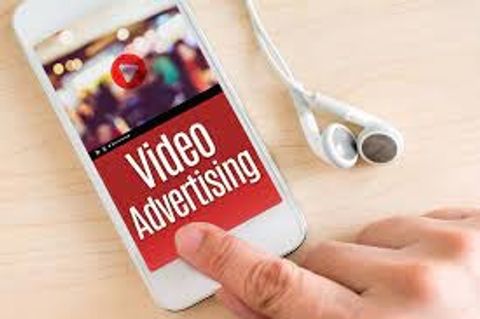Video Advertising Platform: A Complete Guide with Insights and Helpful Resources
Video advertising platforms are digital systems—such as YouTube, LinkedIn, TikTok, and streaming services—that let advertisers deliver promotional video content to targeted audiences. They exist because video delivers high engagement and storytelling power across mobile, desktop, and TV-connected devices.
With the rise of online video consumption—from social platforms to connected TVs—advertisers needed structured places to serve video content, manage budgets, and measure campaign results effectively. These platforms streamline ad creation, targeting, distribution, and performance tracking.
Importance – Why this matters today, who it affects, and what problems it solves
Video advertising matters because:
-
High engagement: Audiences spend increasing time on video—mobile, CTV, social clips—making video a vital ad format.
-
Effective targeting: Platforms enable advertisers to reach specific demographics, interests, or behaviors, improving ROI.
-
Cross-industry relevance: From B2B to e-commerce, entertainment, and education—video ads serve diverse sectors.
-
Measurable impact: Platforms supply performance metrics (views, engagement, conversions), aiding optimization and accountability.
Who it affects:
-
Marketers & advertisers seeking measurable and effective campaigns.
-
Small and mid-size brands using automated tools and AI to simplify video creation.
-
Publishers & creators monetizing content through ads and sponsorships.
-
Consumers, who experience targeted ads and expect both transparency and privacy.
Problems it addresses:
-
Reaching fragmented audiences across devices.
-
Measuring and optimizing ad spend.
-
Scaling personalized content efficiently.
Recent Updates – Key changes, trends, and news from past year
-
Generative AI in ad creation: By mid-2025, more than 80% of advertisers reported using or planning to use AI to generate video content. Small and medium businesses are driving adoption because of reduced costs and faster production.
-
Spending growth: In 2024, digital video advertising spend grew by nearly 20%, crossing $64 billion in the US alone. Projections for 2025 suggest it could reach around $72 billion.
-
Short-form & UGC growth: Short-form vertical videos, shoppable ads, and creator-led campaigns continue to dominate, reflecting consumer preference for fast, authentic content.
-
LinkedIn expansion: LinkedIn rolled out new video ad formats for creators and publishers, boosting uploads and engagement significantly.
-
Ad-supported streaming: Major platforms, including global streaming services, have added limited ads in select markets—signaling a broader shift to hybrid subscription and ad models.
Laws or Policies – How rules, regulations, or government programs affect video advertising
European Union
-
The Digital Services Act (DSA) requires platforms to maintain ad libraries, improve transparency, and prohibits targeting children or using sensitive personal data.
-
Investigations in 2025 highlighted compliance issues for some major platforms, showing stricter enforcement of ad rules.
-
Certain platforms have announced restrictions on political and electoral ads due to these regulations.
United Kingdom
-
Policymakers debated stronger oversight of online video advertising after scams and deepfake content were flagged.
-
The Online Safety Act introduced new duties for digital platforms, including obligations to manage harmful ads and protect children online.
United States
-
The Federal Trade Commission (FTC) enforces truth-in-advertising laws, requiring disclosures and prohibiting deceptive practices.
-
In 2025, greater scrutiny was placed on AI-generated video ads and influencer marketing, requiring clear disclosures and compliance with data use rules.
-
Major broadcasters and platforms have also published updated advertising standards aligned with government policies.
India
-
The Advertising Standards Council of India (ASCI) enforces self-regulation across media, ensuring advertising is honest, legal, and responsible.
-
New digital policies introduced in 2025 focused on online gaming promotions, indirectly affecting ad campaigns in related sectors.
Tools and Resources – Helpful tools, calculators, and services
-
Industry reports: Annual digital video advertising reports provide benchmarks and forecasts for marketers.
-
Generative AI creative tools: Widely used to design video ads quickly and cost-effectively.
-
FTC disclosure checklists: Step-by-step guidance for ensuring influencer and branded content ads meet compliance.
-
Compliance automation tools: AI-based platforms now help advertisers scan campaigns for regulatory risks before launch.
-
Advertising standards and codes: Guidelines published by regional regulators like ASCI (India), FTC (US), and DSA (EU) help advertisers avoid violations.
-
Platform policies: YouTube, LinkedIn, Meta, and streaming services each maintain detailed ad guidelines that advertisers should review regularly.
FAQs – Common questions answered
What is a video advertising platform?
It is a digital system that allows brands to upload, manage, target, and measure video ads across devices like mobile, desktop, and smart TVs.
Why is generative AI important in video ads today?
It streamlines production, personalizes content at scale, reduces costs, and helps smaller businesses compete with larger advertisers.
Are video ads regulated?
Yes. Regulations vary by region, with the EU’s DSA, the US FTC’s advertising rules, India’s ASCI, and the UK’s Online Safety Act all shaping how ads can be served.
What are common ad formats on video platforms?
Formats include short-form vertical videos, pre-roll ads, mid-roll streaming ads, shoppable videos, and branded content collaborations.
How can advertisers stay compliant?
By following self-regulatory guidelines, platform-specific ad policies, and using compliance tools to review disclosures, data practices, and targeting restrictions.
Conclusion
Video advertising platforms are now central to how businesses connect with audiences. They allow for targeted, measurable, and engaging campaigns that can adapt to different devices and content formats.
The rapid rise of generative AI, the expansion of ad-supported streaming, and increasing government regulation are shaping the industry’s future. Advertisers must balance creativity and efficiency with transparency and compliance, ensuring trust with consumers.
As video continues to dominate digital content consumption, staying updated on trends, tools, and legal requirements will be essential for effective and responsible advertising strategies.





